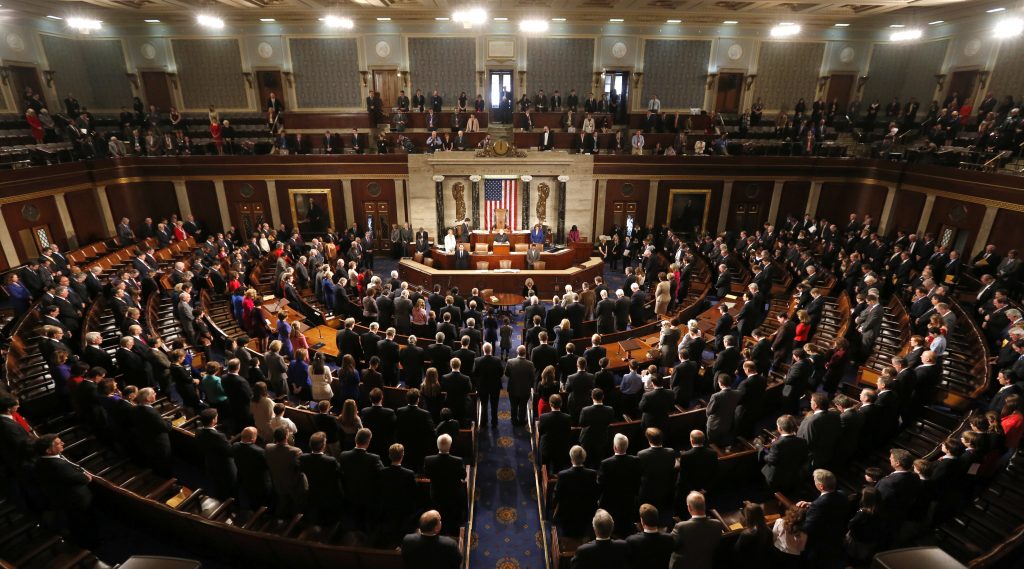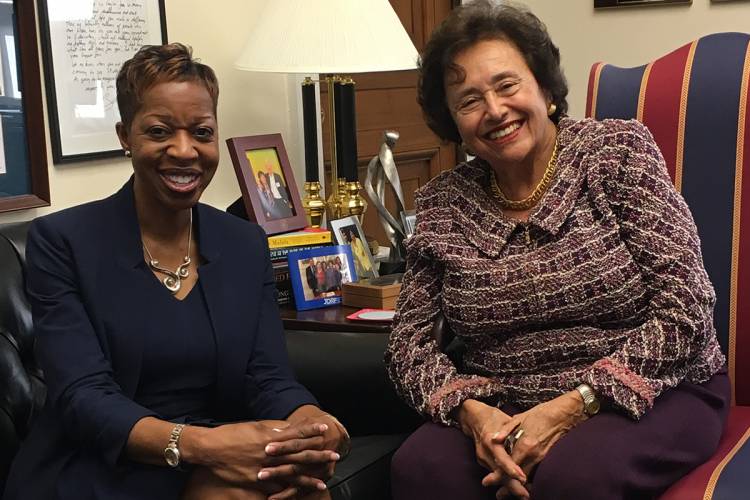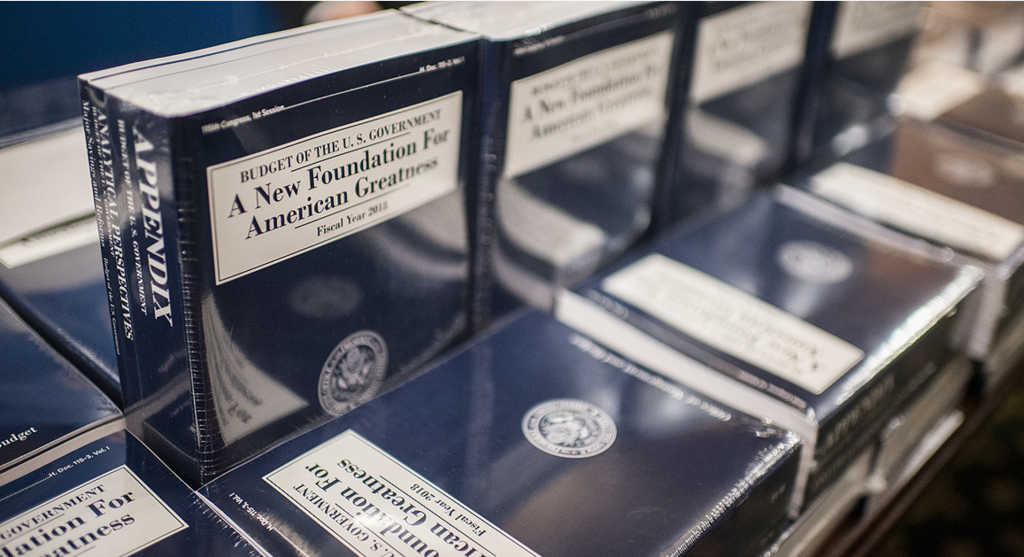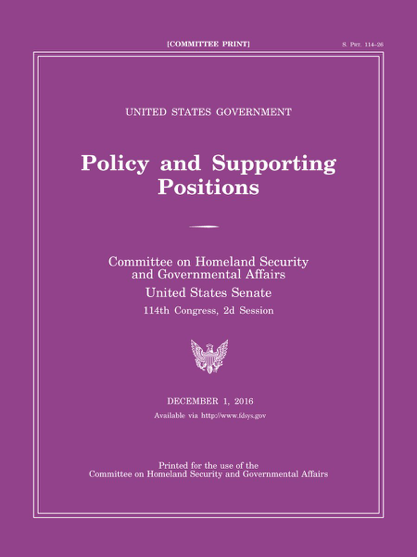Updated: 1/22/18
GOVERNMENT SHUTDOWN ENDS
Congress voted today, Jan. 22, to fund the government through Feb. 8 with a promise from Senate Republicans to debate and vote on an immigration bill before then.
It would also delay Obamacare’s medical device and Cadillac taxes for two years and its health insurance tax for one year. The Cadillac tax on costly workplace health plans, which was previously delayed by Congress, would now go into effect in 2022. The medical device tax had previously been suspended before it took effect again this month.
CHIP
Included in the stopgap funding package was six years of funding for the Children’s Health Insurance Plan, CHIP, which provides roughly 9 million minors in the U.S. with health care coverage even if their parents lack insurance of their own.
Updated: 1/20/18
Disagreement between House and Senate spending plans as well as inter- and intra-party differences has fueled speculation of a government shutdown starting midnight tonight, Jan. 20. Duke Government Relations is closely monitoring the negotiations and sourcing contingency plans from various federal agencies. Below is a list of current shutdown contingency plans as they are updated from previous shutdowns and released by each agency. Some information may only be known after a shutdown has begun.
The full list of government agencies is here:
Government Agency Shutdown Plans
Selected agency plans can be found here:
The Department of Defense
Department of Energy (DOE has not issued a memo but is currently directing traffic to this order)
Department of Homeland Security
National Science Foundation
Health and Human Services
National Endowment for the Humanities
Department of Education
—–
Update: 1/20/18
National Aeronautics and Space Administration
Possible Lapse of Government Funding
The U.S. government faces a possible lapse of funding Friday at midnight (Jan. 19).
• If there is a lapse of government funding at midnight Friday, and no new funding deal is reached during the weekend, NASA would continue operating using available funds until Monday. If there’s still no funding deal then, we would do an orderly closeout of activities.
• International Space Station activities and satellite missions in operation will continue as to protect the crew, spacecraft, and data being collected. In addition, other activities involving protection of life and property will continue. All other agency activities not determined to be legally excepted will stop.
• If there is a lapse of government funding, we’ll make an assessment of all the effects on the agency after funding resumes.
National Science Foundation
When you visit www.nsf.gov, the message below will appear on the website.
Due to the lapse in government funding, National Science Foundation websites and business applications, including NSF.gov, FastLane, and Research.gov will be unavailable until further notice. We sincerely regret this inconvenience.
Updates regarding government operating status and resumption of normal O&M can be found at www.opm.gov.
In cases of imminent threat to life or property, please call the Office of the Inspector General at 1-800-428-2189.
The following addresses the various assistance and contract-related policy and systems issues that may arise during the lapse in appropriations of the Federal Government. NSF is providing this information as a service to our proposer and awardee communities in the hopes that it will address most of the questions you may have during this time period.
Please be aware that, except as noted below, NSF will not be available to respond to emails or phone calls during the lapse in appropriations, but will respond to your inquiries as soon as practicable after normal operations have been resumed. NSF is committed to minimizing the negative impacts this disruption may have on the science and engineering enterprise and, as necessary, will issue follow-on guidance after the lapse in appropriations ends.
Preaward Activities for Assistance Awards (Grants and Cooperative Agreements
Proposal Preparation & Submission
- No new funding opportunities (Dear Colleague Letters, program descriptions, announcements or solicitations) will be issued.
- FastLane proposal preparation and submission will be unavailable.
- Grants.gov may be up and running, however, since FastLane will not be operating, proposal downloads from Grants.gov will not take place. Therefore, proposals will not be checked for compliance with NSF proposal preparation requirements or processed until normal operations are allowed to resume.
Impact on Existing Deadlines
- Once normal operations resume, NSF will issue guidance regarding any funding opportunities that have a deadline or target date that occurs during the lapse in appropriations. Such information will be disseminated via the NSF website, a FastLane Advisory and other electronic methods.
Proposal Review Process
- All panels scheduled to occur during the lapse in appropriations will be cancelled and will likely be rescheduled to a later date.
- Reviews will not be able to be submitted via FastLane.
Proposal Processing Time
- The Foundation may not be able to meet our customer service standard of informing proposers whether their proposals have been declined or recommended for funding within six months of the deadline or target date, or receipt date, whichever is later.
Issuance of New Grants and Cooperative Agreements
- No new grants or cooperative agreements will be awarded.
Issuance of Continuing Grant Increments (CGIs)
- No new CGIs (whether electronically released upon Program Officer acceptance of the Annual Project Report or approved by a Grants and Agreements Officer) will be awarded.
Post-Award Administration for Grants and Cooperative Agreements
Performance of Work
- Awardees may continue performance under their NSF awards during the lapse in appropriations, to the extent funds are available, and the period of performance of the grant or cooperative agreement has not expired. Any expenses must be allowable and in accordance with the Uniform Administrative Requirements, Cost Principles, and Audit Requirements for Federal Awards (2 CFR § 200). During the lapse in appropriations, NSF cannot authorize costs exceeding available award amounts or obligate additional funds to cover such costs
Payments
- No payments will be made during the lapse in appropriations.
Project Reporting
- Principal Investigators (PIs) will be unable to submit annual and final project reports or project outcomes reports via Research.gov. For continuing grants, awardees also should be aware that since annual project reports will not be able to be submitted and Program Officers will not be available to approve them, no new CGIs will be awarded (see above). Awardees should submit their reports as soon as possible after NSF systems are available.
No-Cost Extensions
- No-cost extensions (including grantee-approved and NSF-approved) will not be able to be submitted or processed.
- Awardees, therefore, are cautioned that Federal funds cannot be obligated for expenses that occur beyond the award end date.
Award Transfer Requests will not be able to be submitted or processed.
Supplemental Funding Requests will not be able to be submitted or processed.
Other Post Award Notifications & Requests will not be able to be submitted or processed.
Cooperative Agreements in Support of Large Facilities
- Awardees may continue to perform under Cooperative Support Agreements for work where sufficient funds are available, and performance does not require Government support which would be funded by a lapsed appropriation, including quality assurance oversight or other actions required of NSF staff.
- Since the cooperative nature of these agreements anticipates the need for Government involvement, NSF has, or will have, put work plans in place with the large facility cooperative agreement awardees outlining the extent and time duration that operations will continue in the absence of NSF oversight and direction.
- For agreements that include major research equipment and facilities construction, unless the work is considered to be essential to the operations of the Foundation, and NSF personnel have been retained to provide oversight of construction activities, work cannot proceed for an extended period, even if funds are available, based on the foreseen need for NSF oversight of construction activities.
Payments
- No payments will be made during the lapse in appropriations.
Contracts
- NSF will notify contractors whether they will be expected to continue work in support of an excepted activity, or will issue an order to suspend or stop work, or take other appropriate action during the lapse in appropriations.
- New contracts will not be issued during a lapse in appropriations, except those that NSF has identified as supporting excepted activities, and then only to the extent and amount necessary to meet those requirements.
- Contract personnel may be assigned by NSF to work on excepted activities, provided all requirements governing excepted activities are met. Contractors may perform these excepted services, but only to the minimal extent necessary to address emergency situations, such that the suspension of the function would imminently threaten the safety of human life or the protection of property.
- Contractors may be authorized by NSF to continue to perform under other contracts for work where sufficient funding was obligated prior to the lapse in appropriations, provided performance does not require the use of closed NSF facilities, is not in support of closed NSF facilities, or where the contractor’s work does not require Government oversight or support which would be funded by a lapsed appropriation (such Government oversight or support includes, but is not limited to quality assurance oversight, technical direction, review of deliverables, or similar actions requiring NSF staff).
- NSF may notify certain cost reimbursement and Time and Materials contractors of work plans outlining the extent and time duration that operations can continue in the absence of NSF oversight and direction.
Payments
- No payments will be made during the lapse in appropriations. An extremely limited exception may be made by NSF in circumstances where the payment is made in support of excepted activities, and failure to make the payment itself would result in an imminent threat to life or property.
Excepted Personnel
The Division of Acquisition and Cooperative Support has assigned Contracting Officers to support contract-related excepted activities during the lapse in appropriations.
General Notes:
If you have meetings scheduled with federal officials in the coming days and weeks, please call ahead to determine the operational status of the office.
OGR will continue to monitor the situation and provide updates to the Duke community as further information becomes available.
VP of Public Affairs and Government Relations Michael Schoenfeld sent a note to the university administration this afternoon, Jan. 19. Read it here:
Dear Colleagues,
The Duke Office of Government Relations is closely monitoring the budget negotiations in Washington to determine the implications of a possible federal government shutdown on Duke and its activities. If such a shutdown takes place, it will begin midnight, January 20, 2018.
The Office of Management and Budget (OMB) instructs all federal agencies and congressional offices to prepare and periodically update contingency plans for internal use. OMB has released updated guidance to agencies on planning for operations in absence of appropriations, which you can find here: https://www.whitehouse.gov/wp-content/uploads/2017/11/m-18-05-Final.pdf The existing “OMB Agency Contingency Plans”, required by law to be updated every two years, are available at: https://www.whitehouse.gov/omb/agency-contingency-plans/.
Our Government Relations team in Durham and Washington, DC, will continue to watch for further developments and communications from the federal agencies, but it is possible that official guidance will not become available until after the shutdown takes place. As information is received, we will share it with members of the Duke community through Duke Today. In the meantime, if you have meetings or events planned with federal officials during the next few weeks or have time-sensitive business (i.e. deadlines), it is recommended that contingency plans be considered before the close of business on Friday, January 19, 2018.
With regard to federal funded sponsored research, a communication has been sent to all grant and business managers from University Finance.
Here are the most critical elements:
– Federal systems may not be available and/or not fully supported (e.g. GRANTS.GOV)
– New awards will likely be held
– Some federal contracts will be directly impacted and the Contracting Officer may direct you to stop all work; please be on the lookout for communication from your CO and forward to the applicable pre-award office and Nate Martinez-Wayman in the Office of Sponsored Programs.
Following are two publications from OMB and the Congressional Research Service (CRS) regarding federal government shutdowns for your reference.
Shutdown of the Federal Government: Causes, Processes, and Effects (CRS)
Section 124 – Agency Operations in the Absence of Appropriations (OMB)
This information has also been conveyed to department chairs and program directors. If you have further questions, I encourage you to contact Jim Luther or Melissa Vetterkind.
Mike









 President Trump recently passed his 50th day in office. Though legally of no consequence, the first three months of a President’s tenure is often the only chance he has to set the legislative agenda and therefore the tone of Washington in the coming years. This year, the Trump Administration launched a myriad of executive actions and legislative topics. As part of our series tracking the new Administration, we decided the first fifty days was a good time to take a break from ceaseless news briefings and to take a slightly more atmospheric view of the pace of events.
President Trump recently passed his 50th day in office. Though legally of no consequence, the first three months of a President’s tenure is often the only chance he has to set the legislative agenda and therefore the tone of Washington in the coming years. This year, the Trump Administration launched a myriad of executive actions and legislative topics. As part of our series tracking the new Administration, we decided the first fifty days was a good time to take a break from ceaseless news briefings and to take a slightly more atmospheric view of the pace of events.  When it comes to advocacy days in the Capitol, the first line is the bottom line. Members of Congress and their staff like facts, they like research, and they love it when smart, even-handed academics convey the benefits of their work. Last week, the Dean of Duke’s Pratt School of Engineering Dr. Ravi Bellamkonda journeyed up to Washington, D.C. to open dialogue in times of uncertainty and to fulfill precisely that role of communicator.
When it comes to advocacy days in the Capitol, the first line is the bottom line. Members of Congress and their staff like facts, they like research, and they love it when smart, even-handed academics convey the benefits of their work. Last week, the Dean of Duke’s Pratt School of Engineering Dr. Ravi Bellamkonda journeyed up to Washington, D.C. to open dialogue in times of uncertainty and to fulfill precisely that role of communicator.